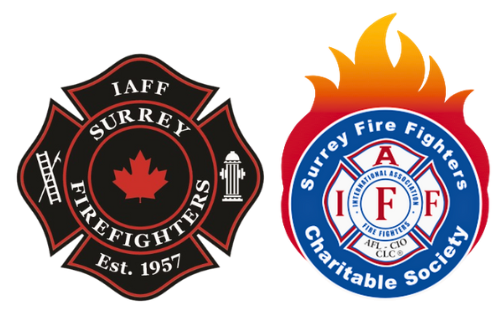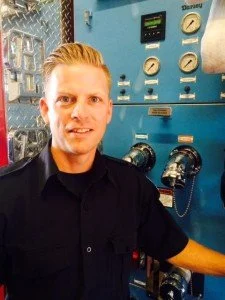DEALING WITH TRAUMA
Learn what caused the wound in order to begin recovery
By Matthew Johnston
September 2015
Have you ever found yourself at a social event and sparked up a conversation with a random person that went something like this:
Random person: “So what do you do for work?”
You: “I am a firefighter.”
Random person: “I could never do that . . . to see what you must see.”
You probably brushed this comment aside and moved along with your evening. But this conversation is an important reminder that in order to deal with the duties of professional fire fighting, at some point in your life, your mind was forced to alter the way you interpret a traumatic experience. As with the formation of a callous on your hand, your mind had to blister first in order to thicken and harden.
This psychological process meant that you had to let the analytical aspect of your mind – getting the job done – suppress nearly all of your natural emotional responses. This shift, through training and experience, changed the way your brain organizes information to the point that what was once considered traumatic became a normal part of your daily reality.
Recent events have made it clear that witnessing trauma can affect firefighters to the point that they become victims of their own professions. In the summer of 2014, Global News reported that 13 Canadian first responders had committed suicide over the spring of that year. In the 10 weeks that followed, the number rose to 23, and by publication, according to the organization Tema Contour, the number was at least 29. (The actual number of first responder suicides is likely significantly higher than media reports suggest as many suicide completions are often masked by lethal methods that appear accidental.) The spike in numbers indicates a firm systemic mental-health crisis is now gripping first responders across Canada. Media articles often point to post-traumatic stress and other mental illness as the root causes of first responder suicides, which paints a bleak picture for the struggling individual who may be apprehensive to reaching out for mental-health support.
Adding to the stigma, the suicide of a colleague often leaves many co-workers in shaken, introspective states, filled with questions and uncertainties of how effective they are at assessing their own personal mental health and wellbeing. For these reasons, first responders, employers and mental-health professionals across Canada have the common interest of finding new ways to assist first responders in recovering from the trauma they regularly experience.
Current challenges
Global News reported last year that some of the Toronto police officers who had taken their own lives were getting various forms of psychological services and supports. First responders that may be struggling with symptoms consistent with post-traumatic stress disorder (PTSD), often have the daunting task of undoing many years of trauma in the face of time-limited therapy. Well-intentioned therapists commonly implement a variety of short-term, solution-focused interventions in the hope of temporarily alleviating the layered effects of longstanding trauma. These deeply seeded traumatic memories continue to resonate within the individual’s being well beyond the clinician’s office, and are often camouflaged by more recognizable and, oddly, more acceptable personal crises, such as divorce, interpersonal conflict and substance use. This therapeutic complexity makes traditional employee-assistance programs (EAPs) inadequate in addressing the often multiple, traumatic work-related events that underlie many of the personal crises faced by struggling first responders.
There is a unique subculture in a paramilitary workplace that extends into the lived emotional reality of first responders. Police, firefighters, paramedics and prison staff work under a command structure in which personal decision-making is restricted by industry protocols and department guidelines. This paradigm of training creates dependable, logic-based behaviour that dominates personal thoughts and actions in the face of extremely stressful situations. These protocols serve to reassure first responders that they did everything they could during a potentially traumatic situation. However, many first responders struggle the most when they physically leave work, yet remain emotionally handcuffed to the memory of a troubling call. In order to understand the power of a traumatic memory, first responders may benefit from exploring how their workplace duties and subcultures impact their everyday functioning.
Building an emotional wall
Our limbic system consists of brain structures that largely govern emotions, behaviours and long-term memory. During a potentially traumatic encounter, first responders are trained to remain calm so that emotional and behavioural patterns follow predictable paths, reflecting industry best practices. This consistency requires first responders to place personal feelings, beliefs and sensations on hold as the analytical mind overrides the emotional challenges of the circumstances.
In order to achieve a calm state, the limbic system is suppressed to cope with the demands of a situation that would either paralyze or cause most humans to flee the given situation. The traditional fight, flight or freeze reaction to stress and anxiety – responses that have been integral to human evolution – are simply not behavioural options for first responders attending emergency situations.
Over time, first responders attending calls of a traumatic nature, typically develop a strong dissociative barrier between risk and action. This allows first responders to run into a burning building, confront a robbery suspect or quell the bleeding of a young child. In these moments, the needs of civilians supersede the physical and emotional harm that first responders may experience. While such actions may be well suited for risk-taking personality types, it also shows the power that a well-trained analytical mind can have in overriding the natural emotional and behavioural reactions to a dangerous situation.
Without a variety of techniques to release the effects of witnessed traumas, the analytical minds of first responders can build up like dams and create barriers that interrupt natural flows and ranges of emotions. A restricted emotional energy leaves a struggling first responder to experience a fast flowing, albeit limited range of thoughts and feelings. These buoyant thoughts and feelings have a tendency to fuel a hyper-aroused state of mind that can produce raw, unprocessed emotional reactions. As unresolved trauma continues to build, the integrity of an emotional and cognitive dam is often breached, which releases uncontrollable images that prevent healthy recovery from taking place. A lost sense of internal control can ultimately progress towards the debilitating state of mind known as PTSD.
If a struggling first responder chooses to ignore certain signs and symptoms, traumatic imagery has the power to dominate attention and is intensified by the thoughts and feelings that accompany emotional pain. This type of imagery can become so powerful that the mind misinterprets or ignores important social cues to the point that it can drive friends, co-workers and loved ones away without any awareness on behalf of the struggling individual.
A closed loop of traumatic thinking and feeling fuels a hyper-aroused state that leads a first responder to having difficulty unwinding from work and experiencing sleep disturbances that exacerbate anxiety-based symptoms. Therefore, it is important for first responders to identify activities that cultivate a peaceful state of mind and quell restlessness. It is only during these moments that traumatic material will have adequate time to aerate, leading to effective stress recovery.
You should seek the help of a professional mental health clinician when you have:
- Difficulty sleeping including frequent nightmares and night terrors
- Unwanted thoughts and feelings that affect concentration
- Flashbacks and powerful, troubling imagery
- Chronic fatigue and loss of interest in usually enjoyable activities
- Irritability towards others including co-workers, strangers and loved ones
- Addictions including alcohol, drugs and body enhancement supplements
- Self-isolating behaviours, including a lack of interest in social connectedness
- Frequent feelings of hopelessness, shame and/or guilt
- Compulsion to work excessively at the expense of important relationships</bu>
Invest in your mental health
One of the advantages that some first responders have is the opportunity to achieve adequate work-life balance. Shift-work rotations combined with holidays throughout the year enable members to have sufficient time off to engage in healthy self-care activities. These opportunities allow firefighters to experience both physical and emotional recovery from work-related duties – but only if the first responder is open to actively engaging in healing practices. While hobbies and interests should not be viewed as an alternative to accessing mental-health services, engaging in regular, healthy activities can lead to many of the same outcomes as effective talk therapy.
Tip: The more resistance you have to engaging in a healthy activity, the more you should push yourself to do it. Limbic memory steals a lot of healthy energy and taking an active approach to quell its powerful impact is one of the few ways to accelerate recovery from work-related stress.
During difficult times, first responders, as with all humans, have a tendency to turn away from many of the activities that can bring them greater work-life balances. Immersing in healthy activities fosters a state of mindfulness – where the first responder’s full attention is in the present without conscious awareness or judgement. This state of mind is a universal stress-recovery practice that reduces the dissociative barrier between the analytical and emotional mind.
During mindfulness-based activities, emotional pain is allowed to aerate spontaneously and naturally. We simply feel better after spending time in nature, finishing a hobby-based project or helping others. Keeping up with a variety of mindfulness-based activities is especially important for first responders who are resistant to accessing professional mental-health services.
Common activities that cultivate mindfulness for fire fighters:
- Breathing exercises cardiovascular activities including sports and hiking
- Creativity wood working and restoration activities
- Healing imagery, music, photography and cooking
- Compassion – volunteering and helping others
- Connectedness – spending time with loved ones and friends
- Nature engagement camping, fishing and hunting
- Physical healing massage therapy and yoga
- Spiritual religious practices and setting time aside to experience silence</bu>
Engaging in mindful self-care measures along with talk therapy allows firefighters to not only digest the effects of work-related trauma, but also reclaim a healthy emotional life. A life filled with positive relationships, an improved outlook and ultimately greater life expectancy are goals that everyone should strive for and deserves. Mindfulness activities can reduce symptoms consistent with PTSD, while also counteracting other related psychological issues including depression and anxiety.
Moving forward, the test for all first responders is finding ways to actively engage in healthy activities during the most challenging points in their careers and lives. While this process will involve a level of vulnerability that may be unfamiliar to most, the emotional crises faced by first responders across Canada warrant the need to embrace and expand on additional ways to recover and heal from witnessed trauma.
Dedicated to #287, #318 and #445; rest in peace, brothers.
Matthew Johnston is a professional fire fighter in the province of British Columbia and a trained mental health clinician. He is certified in critical incident stress management and operates a mental health clinic that specializes in treating first responder trauma. Email him at matt@centeredlifestyle.com
Fire Fighting in Canada Magazine, September 2015 Issue, Page 50 – Article


